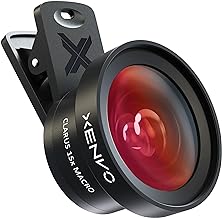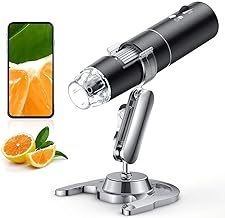5 important factors worth considering when looking for the best macro lens
Photographers are constantly seeking the perfect macro lens as they explore the world of capturing small details. In macro photography, attention to detail is crucial, and choosing the right lens can greatly impact the quality of close-up shots. Selecting a macro lens involves more than just technical specs; factors like magnification, focal length, and optical quality also play a significant role. Understanding these key factors can help photographers create stunning images that reflect their vision and artistic touch.
See our guide to the best macro lens.
Focal length
When choosing a macro lens, the focal length is important for the quality and versatility of your photos. Some people think a longer focal length is always better for close-up shots without scaring away the subject. However, the best focal length depends on how you like to take pictures.
Shorter focal lengths like 50mm or 60mm give you a wide view and are good for getting detailed shots of small things. On the other hand, longer focal lengths like 90mm or 100mm give you more space to work with, which is great for shy or delicate subjects.
Think about how you plan to use your macro lens before deciding on focal length alone. If you often take pictures of bugs or flowers from a distance, a longer focal length might be better. But if you like to take pictures hand-held or include more in your shot, a shorter focal length could be better. Try out different focal lengths to see what works best for your style and needs.
Maximum aperture
When you’re buying a macro lens, it’s important to consider the maximum aperture. A wider aperture lets in more light, which is good for low-light situations and gives you a nice blurry background in your macro photos.
Some people might think that a blurry background is a problem with macro photography, but it actually helps you focus on your subject and create cool effects.
Getting a macro lens with a big maximum aperture not only lets you take better photos in low light, but also gives you the flexibility to take detailed close-up shots with a nice blurry background. Being able to adjust the depth of field with a wider aperture lets you highlight certain parts of your photo, adding depth and interest.
In macro photography, where detail and creativity are important, the maximum aperture you choose can make a big difference in how your photos look.
Minimum focusing distance
When buying a macro lens, it’s important to consider how close you can get to your subject for sharp focus. This minimum focusing distance is crucial for capturing small details. Choosing a macro lens with a shorter minimum focusing distance gives you more flexibility to take close-up photos. Being physically closer to your subject allows you to capture amazing details and create stunning images that will captivate viewers.
In macro photography, being able to get closer to your subject can make a big difference. A shorter minimum focusing distance lets you be more creative and focus on the small details. Whether you’re photographing the veins of a flower petal or the eyes of an insect, a macro lens with a good minimum focusing distance helps you magnify the beauty of the world around you. Embrace the ability to get closer to your subject and discover new possibilities in your macro photography.
Image stabilization
When diving into the world of macro photography, having image stabilization is crucial. A macro lens with good stabilization can help you capture clear and detailed images of small subjects. When taking close-up shots in macro photography, any shaking of the camera can lead to blurry photos. Image stabilization technology helps prevent these movements, making it easier for you to get sharp and detailed macro shots. So, when choosing a macro lens, make sure to prioritize image stabilization to improve the quality of your work significantly.
Image stabilization not only improves the technical aspects of macro photography but also enhances the creative process. It gives you a steady base for capturing small details, allowing you to concentrate on composition, lighting, and the subject’s expression. This creates a stronger connection between you and the subject, resulting in emotionally resonant and artistic images. Prioritizing image stabilization in your macro lens choice goes beyond just functionality; it enhances your photography experience, leading to visually captivating photos.
Auto focus speed and accuracy
When getting into the world of macro photography, having a lens that can focus quickly and accurately is crucial for capturing small details. A good autofocus system can help you nail those shots, especially when photographing fast-moving insects or delicate flowers. While manual focus has its benefits, using autofocus can save time and allow you to focus on being creative.
Investing in a macro lens with great autofocus capabilities can take your photography to the next level, allowing you to capture details with clarity. Autofocus technology has improved a lot, offering faster and more precise performance than ever before. When choosing a macro lens, look for fast and accurate autofocus to improve your photography and ensure sharp results every time. In macro photography, where accuracy is key, a reliable autofocus system can make the difference between a good photo and an exceptional one.
Conclusion
In a world full of amazing things to see, the macro lens is really special. It helps us see tiny details we can’t see with just our eyes. It shows us a new way of looking at the world around us, revealing hidden beauty in everyday things. When we use the macro lens to take a picture, it encourages us to look closer and understand the complexity of simple things. This lens goes beyond just taking pictures – it opens a door to a whole new world of wonders that are waiting to be discovered and appreciated. Want more info on cupping for cellulite reduction, check the best cupping for cellulite reduction.

